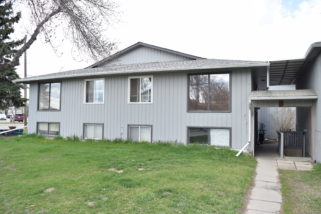Locked In or Floating Rate-The Variable Mortgage Rates Dilemma
Locked In or Variable Rate Mortgages
Lock in or float? This article from the Vancouver Sun suggests floating remains a good choice for many borrowers:
Michael Kane
Vancouver SunHOME LOAN DILEMMA: TO LOCK IN OR FLOAT:
Kelly Patterson, a mobile mortgages manager with VanCity Credit Union, says the posted rates used by financial institutions let them offer discounts of at least one per cent.
Interest rates are going up and homeowners with floating rate mortgages are asking if this is the time to lock in to a fixed term. While nobody can predict future interest rates with any certainty, the answer almost certainly is no.
Over the long-term, academic research shows that people who borrow at prime rate will save money most of the time versus borrowers who choose five-year fixed rates.
The exceptions occur during periods of runaway inflation. The vigilance of Bank of Canada governor David Dodge suggests we are not likely to go back to the crazy days of the early ’80s when interest rates topped 20 per cent.
Over the short-term, however, interest rate vigilance means prime rate is rising faster than fixed rates, although it would have to rise two full percentage points to match current five-year mortgage rates.
If that is to happen, it will happen in stages, with the next .25 per cent or .50 per cent increase expected in July. The floating rate borrower will still be saving money until and if the two rates converge.
Typically prime runs at 1.75 per cent to 2.0 per cent below the five-year rate. In the past, that has translated into savings of about $22,000 in interest payments on a $100,000 mortgage amortized over 15 years, says Moshe Milevsky, a finance professor at York University.
If you choose to lock in, you may be buying security but you are also gambling the prime rate will go past your locked-in rate sooner or later. The longer floating rates stay below your locked-in rate, the higher rates have to rise and the longer they must stay there for you to just break even.
Consider a scenario with prime rate going up a full percentage point over the next year and a further full point in the following year. Most forecasters see a one point increase in the coming year but aren’t prepared
to look beyond that, especially if U.S. rates remain flat.
Let’s assume you have a $200,000 mortgage and a choice of borrowing at 3.75 per cent — that’s half a percentage point below bank prime — or locking in for a three-year mortgage at 5.6 per cent.
Both rates were quoted Wednesday by Kelly Patterson, a mobile mortgages manager with VanCity Credit Union, who admits that the posted rates used by financial institutions are a sham to let them offer discounts of at least one per cent.
If you go with VanCity’s below-prime mortgage, your payments will be $1,025 monthly, compared to $1,232 monthly for the credit union’s best three-year term. Your savings will $207 monthly or $7,452 over three years, assuming the mortgage payment remains constant. (Payments on some variable rate mortgages go up when prime rate rises, or when it rises significantly. Be sure to check the details with your lender).
In addition to saving money up front, the prime rate borrower ends up owing less, even if prime rate rises by one per cent next year and another point the following year.
At the end of three years with the fixed-rate mortgage, you would have paid $7,565 in interest, $3,526 off the principal and you would still owe $196,473 of your original $200,000 mortgage.
At the end of three years with the variable rate mortgage, your outstanding debt would be $195,792 — $681 less — having paid interest of $3,401 and $2,749 off the principal in the first year at 3.75 per cent; interest of $2,127 and $943 off the principal in the second year at 4.75 per cent; and interest of $2,559 and $513 off the principal in the third year at 5.75 percent.
Clearly your principal reduction will be much greater if prime rate doesn’t rise as far or as fast, or if your monthly payment goes up with each prime rate increase.
In a study for Manulife Financial, Milevsky compared a floating strategy with five-year fixed rates over the past 50 years and concluded that it is better to stay with a floating rate nine times out of 10. Milevsky also found there are no clear signals to identify that tenth time when you would be better off locking in.
If you have some equity in your home and you would like to hedge your bets, Vancouver financial planner Gina Macdonald suggests locking in part of your mortgage at the five-year rate and applying the rest to a line of credit at prime.
In our $200,000 example, you might have a $100,000 mortgage at the five-year rate and then max out the other $100,000 with an equity-linked line of credit. The lender still owns your home but you get the security of a fixed rate for half of your debt — you know what your payment is going to be — and the savings and flexibility of a floating rate on the other half. If times get tough, you can simply pay interest on the line of credit portion. In good times, there are no restrictions on pre-payments if you have income to spare.
Skip Bates, a Scotiabank vice-president, has three different rates for the $200,000 mortgage on his Vancouver home — about $100,000 at the five-year rate, $50,000 at the three-year rate and $50,000 at the variable rate — although he confesses a much-transferred bank officer gets a sweeter deal on rates than the man in the street.
“The issue of locking in really depends on your risk profile, how much of a change in rates you can tolerate and the length of time you intend to stay in the home,” he said.”There is no easy answer because everybody’s circumstances are different and their financial needs are different.”
One solution is a variable rate mortgage with a capped rate. Scotiabank is currently offering a three-year deal where payment is based on its current posted three-year rate of 6.75 per cent but the actual rate is set at half a point below prime. That way you get accelerated principal reduction while rates remain low and you are guaranteed that your rate will not go above 6.75 per cent.
Neither Patterson or Bates recommends floating rate mortgages for first-time buyers if they have little equity in their homes or little spare cash flow.
“But most of the people who have been around the block a few times are taking the variable products,” Patterson said. “Even with the recent increase to 3.75 per cent, there is such a gain in reducing the principal on your mortgage that it is going to outweigh the long-term effect of higher rates.”
© Copyright Vancouver Sun



































